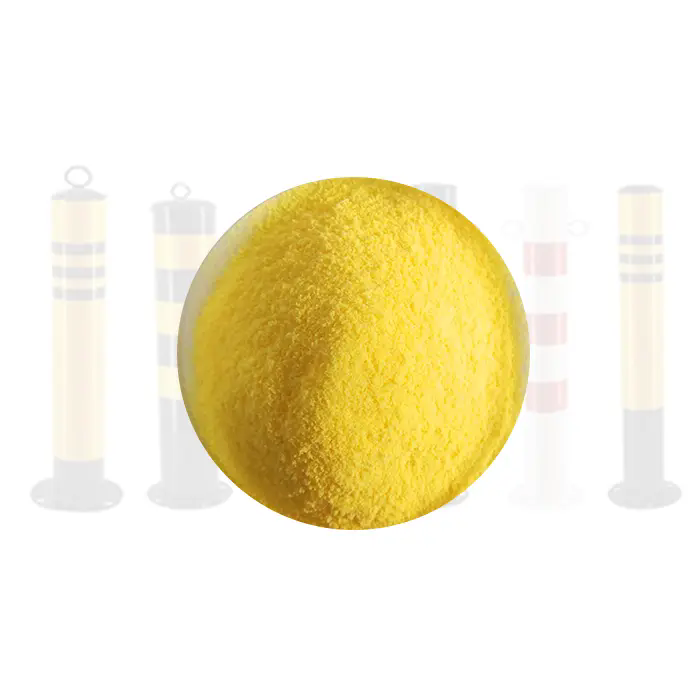What is Rotomolding LLDPE and Why is It Ideal for Manufacturing Durable Products?
2024-12-17
When it comes to producing strong, versatile, and long-lasting plastic products, rotomolding LLDPE (Linear Low-Density Polyethylene) has gained widespread recognition across industries. But what exactly is rotomolding LLDPE, and why is it such a popular choice for manufacturing a variety of goods? Whether you're in the market for sturdy containers, tanks, or recreational products, understanding the benefits of this material and manufacturing process can help you make better decisions for your next project. Let’s dive into the world of rotomolding LLDPE and explore why it’s the go-to solution for many industries.
What is Rotomolding LLDPE?
Rotomolding, or rotational molding, is a manufacturing process used to create hollow plastic products. In this process, powdered LLDPE (Linear Low-Density Polyethylene) is placed into a mold, which is then rotated in multiple directions as it is heated. This rotation allows the material to evenly coat the inside of the mold and form a consistent, durable plastic product once it cools and solidifies.
LLDPE is a type of polyethylene that is characterized by its low density and flexibility. It has excellent stress crack resistance, impact resistance, and good chemical resistance, making it ideal for applications where durability and toughness are essential. When combined with the rotomolding process, LLDPE offers a range of benefits that make it a preferred choice for producing a variety of molded products.
How Does Rotomolding LLDPE Work?
The rotomolding process involves several steps to produce a finished product:
1. Material Loading: The process begins by loading the powdered LLDPE material into a mold. The mold is typically made of metal, and it can be designed in any shape required for the final product.
2. Heating: The mold is then placed in an oven where it is heated to a specific temperature. The heat causes the LLDPE powder to melt and begin adhering to the interior walls of the mold.
3. Rotating: While the mold is heated, it is slowly rotated along two axes. This rotation ensures that the melted material is evenly distributed, forming a uniform layer that coats the inside of the mold. The rotation also helps the material to flow into hard-to-reach areas of the mold, ensuring the product’s shape and structure are intact.
4. Cooling: Once the material has fully melted and coated the mold, the mold is cooled (either with air or water). As it cools, the LLDPE solidifies into the final shape.
5. Demolding: After cooling, the mold is opened, and the finished product is removed. The product may undergo some additional trimming or finishing, depending on the application.
Why is LLDPE Ideal for Rotomolding?
LLDPE stands out as the material of choice for the rotomolding process for several reasons:
1. Durability: LLDPE is incredibly durable and resistant to impact, making it an ideal choice for products that need to withstand heavy use or harsh conditions. Whether it's used in the production of storage tanks, automotive parts, or recreational items, LLDPE ensures that the final product will last for years.
2. Flexibility: The flexibility of LLDPE allows for the creation of complex shapes without sacrificing strength. The material is able to bend without cracking or breaking, which is especially important for products that need to endure bending or shifting without damage.
3. Cost-Effectiveness: Compared to other plastic materials, LLDPE is relatively inexpensive. This makes it an affordable choice for both small and large-scale production runs, especially for manufacturers looking to keep costs down while maintaining product quality.
4. Chemical Resistance: LLDPE is resistant to a variety of chemicals, including acids, alkalis, and salts. This makes it suitable for use in products that need to withstand exposure to chemicals or environmental elements, such as tanks, containers, or industrial components.
5. Environmental Resistance: LLDPE exhibits excellent resistance to UV rays and environmental conditions, making it ideal for outdoor products. Whether it’s garden furniture, playground equipment, or storage containers, LLDPE products can withstand prolonged exposure to the sun without degrading.
6. Seamless Construction: One of the main benefits of rotomolding is the ability to create seamless, one-piece products. Without joints or seams, products made with rotomolding LLDPE are structurally stronger and more resistant to leaks or damage, making them perfect for holding liquids or other materials.
7. Lightweight: Despite its strength and durability, LLDPE is a lightweight material, which is beneficial for products that need to be easily transported or handled.
Common Applications of Rotomolding LLDPE
LLDPE's unique properties make it suitable for a wide range of applications, including:
1. Storage Tanks and Containers: The durability and chemical resistance of LLDPE make it ideal for manufacturing large storage tanks, containers, and bins used in industries such as agriculture, water treatment, and chemicals.
2. Automotive Parts: LLDPE is commonly used for creating automotive components like bumpers, fenders, and wheel covers, thanks to its flexibility, impact resistance, and lightweight properties.
3. Outdoor Furniture: Products such as garden chairs, tables, and benches made from LLDPE are resistant to weathering, UV rays, and impact, making them perfect for outdoor environments.
4. Recreational Products: From kayaks and canoes to playground equipment and outdoor toys, LLDPE is widely used in the production of durable and safe recreational products. Its ability to resist wear and tear while remaining lightweight is a key factor in these applications.
5. Safety Barriers and Cones: LLDPE is also used in the production of traffic cones, safety barriers, and other products that require visibility and durability. Its resistance to UV rays and impact makes it an excellent choice for these applications.
6. Coolers and Ice Chests: Many coolers and ice chests are made from rotomolded LLDPE because the material provides excellent insulation and durability, allowing them to withstand the rigors of outdoor use.
7. Marine Applications: LLDPE is used in the creation of dock components, buoys, and other marine-related products, where its ability to resist saltwater and impact makes it a reliable material for the harsh marine environment.
Benefits of Using Rotomolding LLDPE in Manufacturing
1. Design Flexibility: Rotomolding allows for the creation of complex, hollow, and customized shapes. Whether you're creating a large, intricate product or a small, detailed item, rotomolding LLDPE offers a high level of design flexibility.
2. Cost Efficiency in Production: Rotomolding is ideal for producing products in medium to large volumes. It is often more cost-effective than other plastic molding processes like injection molding, especially when the product requires a larger size or a hollow structure.
3. Uniformity and Consistency: The rotational process ensures that the product’s walls are uniformly thick, which leads to greater consistency in quality and performance. There’s minimal variation in material distribution, ensuring a reliable end product.
4. Reduced Waste: Since rotomolding uses powder that completely melts and adheres to the mold, there is minimal waste of material. Excess material can often be reused, which makes the process more environmentally friendly.
Conclusion
Rotomolding LLDPE is an excellent choice for producing durable, high-quality, and cost-effective plastic products. With its ability to create complex shapes, resistance to impact, and versatility, LLDPE is an ideal material for applications in industries such as automotive, outdoor goods, and storage solutions. Whether you're manufacturing a product for personal use or looking for a reliable solution for large-scale production, rotomolding with LLDPE offers a combination of durability, flexibility, and efficiency that makes it an outstanding choice for modern manufacturing. So, if you’re considering plastic molding for your next product, LLDPE might just be the material you need!



